Contributed by Laura Ruth
Enjoy the Mystical Hope audio recording at the bottom of this reflection.
“Come, are you ready to set out?”
The first chapter of Mystical Hope: Trusting in the Mercy of God ends with that question. Cynthia extends her hand, welcoming all who want to travel on a path to the wellsprings. She speaks to that which lies far beyond the familiar hope for an outcome, resolution of challenge or difficulty, or wish for change. And introduces the wildly different nature of what she calls: Mystical Hope.
As we really listen to what we usually connect to the word “hope,” we see that they usually share qualities of this world, often in the future. Our hopes often relate to conditions, circumstances, events or situations. Hope for or about something. Our hopes point towards a desired outcome; what we imagine as best-case scenario. The journey Cynthia is inviting us to is of another color.
There is a lively tradition along the spiritual path of “hints.” Shakespeare described a hint as “an indirect suggestion intended to be caught by the knowing.” There is a clue in the opening poem by Symeon the New Theologian (born in 949). His words speak directly to our contemporary hearts of the most intimate and physically embodied relationship that we can imagine. Our knowing catches a lived experience, riveting us to the present moment.
We awaken in Christ’s body as Christ awakens our bodies, and my poor hand is Christ, He enters my foot, and is infinitely me.
I move my hand, and wonderfully my hand becomes Christ, becomes all of Him (for God is indivisibly whole, seamless in His Godhood)…
The poem has no relationship with the hope of tax refunds and vacations, test results and new puppies; nor the hope for the future our grandchildren will inherit. Even the hope for the safe passage of a loved one through crisis is not this. What a sweet hope it is, so full! Awakening, opening, abundant embodiment: Becoming.
…And let yourself receive the one who is opening to you so deeply. For if we genuinely love Him, we wake up inside Christ’s body
where all our body, all over, every most hidden part of it, is realized in joy as Him, and He makes us, utterly, real.
Call and response, is that the part we play in mystical hope? Our agency is implicit. It is not about miracles, like the parting of the sea at the last possible moment, or a gift of grace that God bestows upon us, in God’s time. It is not about a beautiful gift that we have nothing to do with. For Cynthia, the distinction of mystical hope is that it describes a state of being that is a change of consciousness; a transformation. It is alive in that it is relational: receptive, responsive, reciprocal.
And everything that is hurt, everything that seemed to us dark, harsh, shameful, maimed, ugly, irreparably damaged, is in Him transformed
and recognized as whole, as lovely, and radiant in His light. We awaken as the Beloved in every last part of our body.
Symeon’s poem is born of the wellspring of mystical hope. It exists in the aliveness of the present here and now, as well as beyond time. It is immediate, personal, intimate, though it was written over a thousand years ago.
Mystical hope, says Cynthia, is atemporal. It is relational and visceral; a contact and a filling—currents coming together in the body. Cynthia calls mystical hope a reconnection with Presence. The “experience of being met, held in communion, by something intimately at hand.” It is known in sensation; “fills the body with strength, expansiveness and joy.”
Receive, wake up. Create within ourselves a home for connection and exchange; open to trust the wellspring, become conscious. Accept guidance, genuinely love. We will do what we can do. Respond to the invitation and learn to dance with what has been given. We can and will miss the call, over and again, and perhaps sometimes, “become a chalice into which this divine energy can pour; a lamp through which it can shine.”
What Cynthia describes as “a direct encounter with Being itself” is present in the sacred text of all the traditions, and is also close to us, right now, in our very lives. What intends to be caught by the knowing is sometimes as simple as a sensation that reminds us to pay attention. Chapter One provides plenty of opportunities and examples, engaging our attention. Reading it, the memory of moment after moment of awakening—inexplicitly—while in the turmoil of undiagnosed illness arises; noticing in daily life being “surprised by joy” (as a favorite C. S. Lewis quote expresses it).
We train ourselves to tune in to what is always being given out of the rivers of abundance, joy and presence that run strong under the surface of life. Welcoming those currents in the depth of our hearts and in bodily sensation. That is what this little book is about, and Chapter One invites us to dive right in. Offers tools to “learn to think and see in a new way;” to enter into relationship with mystical hope.
In a state of both grief and grace, Cynthia heard Rafe’s voice in the wee hours after his death say to her, “I’ll meet you in the body of hope.” Trusting that she would one day understand those cryptic words, she waited, in the not-knowing.
Six weeks later she understood. In the midst of hopelessness beyond hope, an effervescent lightness arose, “a distinctly physical sensation…as if I had been recharged, filled and fueled with an energy so light and buoyant that I simply could not sink even if I wanted to.” It was the beginning of a new life with Rafe, and the embodiment of mystical hope.
For a moment, as Cynthia describes Saint Brendan towards the end of his journey, “something is reversed inside…and an inner eye opens that can see the luminous fullness beneath the surface motions of coming, going, striving and arriving,” and in that moment we are changed.
May we become “utterly, real.”
A Post Script: When we begin to work afresh with one of Cynthia’s books in these Wisdom Practice Book Circles, it is my practice to sense into how it is alive in me right now. Lately I have been noticing how as I age I am becoming more accepting of what is. In my work with others I see this as well. Allowing Mystical Hope to come alive in me again, I notice how connected it is to this deepening compassion and acceptance. How falling into an old pattern of self-will is reflected in an experience of separation and scrambling against what is right in front of me.
We are accustomed to playing guardian and judge of our experience; experts in how we (or they) are measuring up, what we/they should be doing, who we/they ought to be. Centering Prayer, Welcoming Prayer, the Gurdjieff work of self observation and practical exercises: these are a training in reality. They ask us to take a pause, embody, notice, let go. A deeper connectivity awaits us.
As I become more compassionate in myself, know myself more as a human being who is part of a whole than as “Laura,” I notice that we spend a lot of time as humans trying to be something we are not. We expect to be able to do what we do not know how to do, to feel something we just do not have access to right now, to know something we simply don’t know. Chastising ourselves and others for not being something other than what we/they actually are.
We miss the opportunity to stay with and be-into. Down and through. Over and again. And we miss the chance to become present, and in so doing, miss, in Cynthia’s words: the “atemporal” quality of Mystical Hope as “an embodied direct encounter with Being,” and the opening of a visceral experience of “strength, expansion and joy.” We miss the preparation for, and mutual creation of, the foundation within us that is necessary if we are to become “a chalice for divine energy to pour through.”
The Gurdjieff work is very specific about not trying to change what we notice about our own behavior, just as Centering Prayer asks us to let go and be with the practice as it is. This requires generosity and patience; a humility and willingness to accept what is. It requires us not to do something about it, but to be present to it. It requires us to trust in something beyond ourselves and know that we cannot do it alone. Cynthia writes beautifully in a little section she calls “The Harrowing of Hell” about Jesus sitting in the very heart of the earth after the crucifixion with everything that is broken about us as humans—our most dense, unyielding, disconnected, and sclerotic parts of self. She says of Jesus:
…he is just sitting there in the midst of all this darkness, not judging, not fixing, just letting it be in love. And in so doing, he is allowing love to go deeper, pressing all the way to the innermost ground out of which the opposites arise and holding that to the light…gently reconnecting them to the whole.” Wisdom Jesus, pg. 123
What a beautiful path laid out for us, and for the fullness of Mystical Hope. We, too, can be part of this. In words of Michel de Salzmann sent recently by a friend, we can begin to receive “a look upon me, not from my ordinary self, but from that which sees objectively as it is.” He goes on to say this gift needs our attention and care. It will stabilize within us, help us become ready to set out. Ready to become conscious participants in the dance of life on earth and beyond.
As we open ourselves to what is—as it is—releasing our old notions, habits and patterns of a conditional hope—space opens within us to “see the luminous fullness beneath the surface motions” of our lives, and the greater community of life. Becoming part of that vibration of Being, the body of Mystical Hope wends its way into our daily lives and loves. Serving the whole of creation, one small, essential, step at a time.
A Note from Wisdom Waypoints
Ready to listen in? Enjoy this free audio recording of Mystical Hope contributed by our expanded Wisdom Waypoints network which offers a spoken version of Cynthia Bourgeault’s timeless inspiration for challenging times. You can also purchase Mystical Hope on Amazon.
Mystical Hope Chapter 1
Mystical Hope Chapter 2
Mystical Hope Chapter 3
Mystical Hope Chapter 4
Mystical Hope Chapter 5
This resource was offered by Laura Ruth.
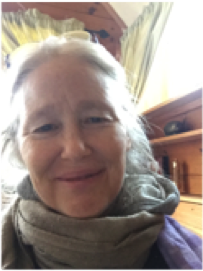
Laura is, now, emeritus witness on the Wisdom Waypoints Board, and enjoys being steward with people in the Wisdom Waypoints Practice Book Circles. In her companion work with Living Wisdom groups, and one on one with people who find themselves on a Wisdom path, Laura is devoted to an embodied, practical Wisdom that is awake and alive in our daily lives. She is grateful for Cynthia’s lineage and the Wisdom community, where she has found a true sharing of embodied practice, of hearts, and of minds, creates a living body of spiritual exploration that continues to welcome, grow and mature in untold ways. Grateful too for the course of life unfolding, bearing with it all the surprise elements both joyful and painful that have become her teachers over the years. A prayer, then, and now: May I become ever more aware of all that has been given through thick and thin, and of the untold cost of my arising; and God help me to live that gracefully, and give back, with love.
Mystical Hope Wisdom Practice Book Circle 2020
These writings were part of a monthly series of reflections contributed by participants and leaders in the Wisdom Practice Book Circle exploring Mystical Hope: Trusting in the Mercy of God by Cynthia Bourgeault.


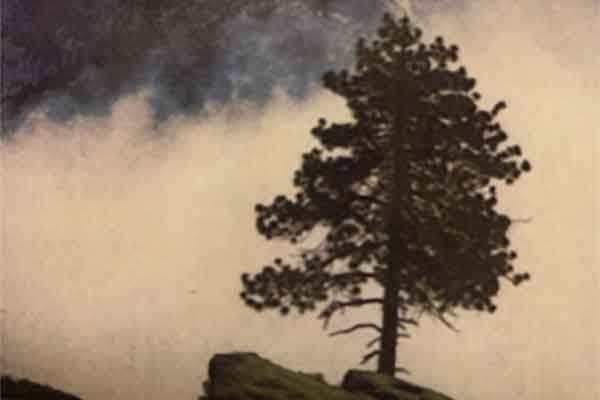
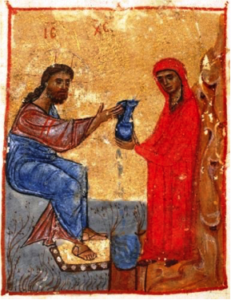
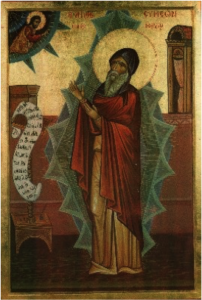
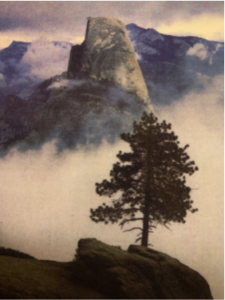
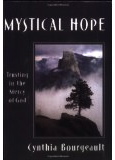
I’m just beginning to read this wonderful treasure. Thank you.
Thank you so much Laura. Beautiful writing. I’ve been thinking a lot lately about hope and how fragile and beautiful it is as embodied spirit. I miss you!
Am not sure this is where to post remarks after our class today but want to follow up the synchronicity of receiving the following in the mail:
From Etty Hillesum, Dutch Jew who died at Auschwitz concentration camp, writing from the Westerbork transit camp:
“There is a really deep well inside me. And in it dwells God. Sometimes I am there, too…And that is all we can manage these days and also all that really matters: that we safeguard that little piece of You, God, in ourselves.” Some call that well “hope”
Beautiful Robin, and thank you Allen. And yes, you are welcome to post after class here, and after the Mystical Hope posts that will follow this one. There may also be an email thread in your NEW/WW study group to be sharing in as well, but we appreciate you sharing your comments and the poignant and profound quote from Etty Hillesum—whose heart shines through her words in the midst of the most incomprehensible human terrors. Thank you so much for sharing it with the wider community. We are all in it together! With love, Laura
Very beautiful post Laura, thanks.